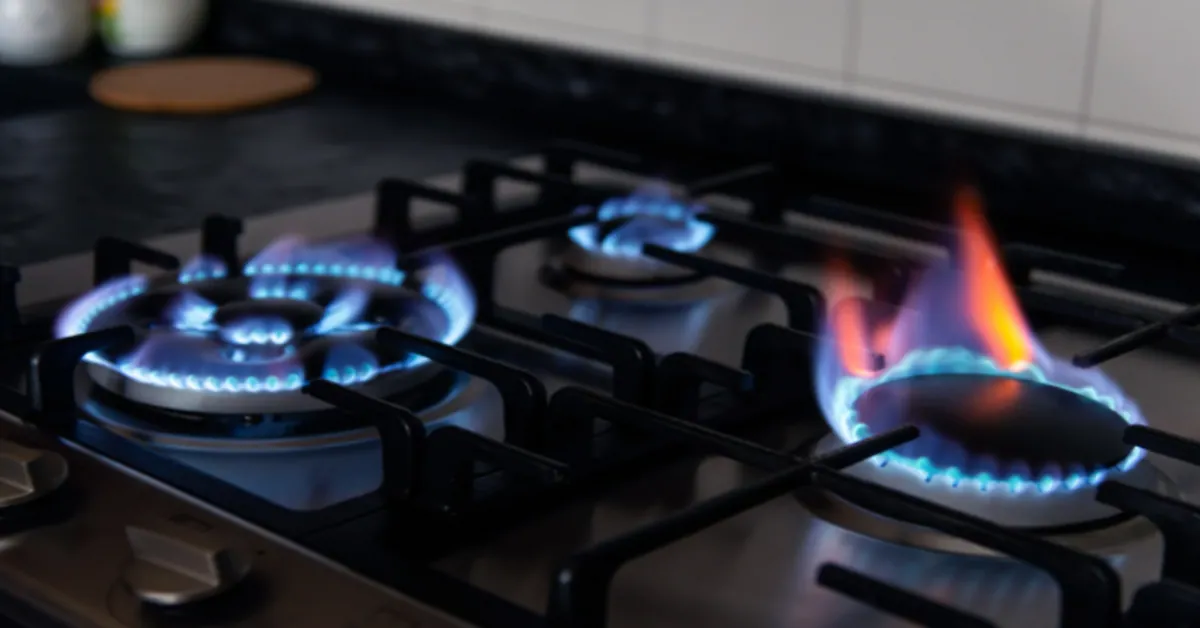Cooking equipment plays a crucial role in determining the usefulness of your kitchen space as it directly impacts its functionality. Since there weren’t many options accessible in the past, gas cooktops and ovens have been a staple in our homes for decades for baking and cooking. However, with the advent of electromagnetic induction technology in the culinary range in recent years, electric ovens and stoves have also grown more prevalent and accessible in modern times. You want to discover the wiser decision for your kitchen between a gas and an electric stove. Unfortunately, there isn’t a simple solution. Each has particular advantages and disadvantages, so you may decide which is best for you based on how you cook. However, your choice of electric or gas stove may be influenced by the energy source you have access to. You can decide whether to choose a single style or a hybrid to suit your cooking needs by reading the advantages and disadvantages of gas and electric stoves below.
Gas VS Electric Stove: Key Differences
How Does a Gas Stove Work?
A gas stove operates in a very simple manner. In essence, a gas stove circulates gas and air through a burner unit. An igniter will produce sparks to turn the gas into continuous flames as it passes through the burner. No matter how long it takes to prepare your food, those flames will keep burning as you place cookware on top of them. Your gas stove’s individual burner knobs can be used to control each burner. The starter will flash to ignite the flame when you first turn the knob. Once the flame is lit, you can spin the knob to alter the flame’s size and the amount of heat it emits.
How Does an Electric Stove Work?
Electric stovetops don’t emit a flame, unlike gas burners. Instead, a heating element is activated by an electric current. If your stove contains coils, the heat is transferred to your cookware directly from the coils. If your stovetop is made of glass or ceramic, heat is radiated to this top before spreading to your pots and skillets. Your electric stove has a total of four or five heating elements, each of which is connected to a separate control switch. This switch shuts the circuit by joining two “legs” that are each powered by 120 volts of alternating current. Each leg carries an electric current that flows together in the heating element to create heat.
Installation
You should ideally reside in a natural gas line area if you want to install a gas range. However, if your home has a yard, you have the choice to install an above-ground outside LP tank. Although it’s not the prettiest thing to look at, you’ll probably only need to replenish it once or twice a year. If you desire one, you can also use the tank to power amenities like a gas fireplace. In contrast, if your home currently has a gas range and you wish to replace it with an electric one, you might need a new circuit because electric stoves demand more power than a standard household outlet can supply. We advise that you hire an electrician to inspect the electrical wiring in your kitchen before switching from an all-gas range to an electric or a dual fuel range. But the question is: Which type of stove should you consider for camping? Some people prefer gas camping stove while others use electric. A gas stove camping is also referred to as a gas portable stove. The best two types of camping stove include a double gas burner and a multi-cooker.
An easy way to cook anywhere with the same power and versatility as at home is with a two-burner gas stove, which is compact, light, and portable.
A multi-cooker is an electric device having multiple cooking settings that may be programmed. However, the most popular ones are pressure cooking, slow cooking, yogurt making, steaming, baking, and warm meals. The list of features varies from brand to brand.
Appearance
A gas range offers a kitchen an elegant appearance. It frequently serves as the room’s focal point and gives away the presence of a passionate cook. A gas range, however, might appear unkempt and is more strenuous to maintain.
In contrast, an electric range with a smooth glass top is more modern-looking, cleaner, and sleek. Because of this, it appeals to everybody who wants a clean kitchen.
Efficiency
Gas triumphs over electricity in the energy efficiency race by a wide margin. The energy required to create and supply electricity to your stove is around three times more. The California Energy Commission estimates that a gas stove will be less expensive to use than an electric one. You can reduce your annual spending by purchasing a gas stove and then using energy-saving techniques. When it comes to usability, gas stoves can possibly be the undisputed champion. Even while electric stoves can occasionally heat up more quickly than gas stoves, cooks can more swiftly and easily adjust the heat level with a gas burner by turning the gas stove fires up or down. Additionally, electric stove burners have a propensity to retain heat longer, so even after you switch off the heat, a pot left on the stove may continue to cook and eventually burn.
Which is Better at Cooking?
When cooking anything that needs to be done fast, like an egg, a gas stove heats up more quickly than an electric one. Also specifically responsive is gas. The heat level drops the moment you choose a lower setting. To avoid burning when preparing chocolate pudding, lower the heat as soon as it begins to thicken. Chefs adore gas because it makes it easier for them to control the temperature of sauces so that they don’t curdle or get too thick. Electric ranges start heating more slowly, but once they do, they catch up. A pot of water will boil on an electric element much more quickly than on a gas burner; some electric cooktops can boil 6 quarts of water in less than 15 minutes, whereas gas ranges usually take 25 minutes.
Which One Costs Less?
As long as they are the same size and are made by the same appliance manufacturer, there isn’t much of a price difference between kitchen appliances that are gas and those that are electric. Features and aesthetics are the primary determinants of price. As features increase and a product’s aesthetic becomes more sophisticated, appliances get more expensive. Each brand offers a different range of prices for both gas and electric stoves.
Which is Simpler to Clean?
It may be simpler to clean an electric stove. Cleaning gas stoves with burners and grates is equivalent to cleaning electric coil stoves. A gas range has burners, grates, and burner pans, each of which has crevices and is challenging to keep clean. They must be taken off the stovetop, soaked in the sink, and then put back in place to get them properly clean. They are frequently bulky, heavy, and difficult to manage. An electric range’s glass-ceramic surface can be easily cleaned by wiping it down, but spills and splashes can burn into the surface and be challenging to remove. As soon as you can, wipe up any spills with a moist sponge or paper towel to preserve an electric stove in excellent shape.
The Safer Option
Electric ranges are often safer than gas ranges. An incorrectly placed gas range may have a gas leak, which could cause a fire or explosion. Additionally, even a properly built gas range can release minute amounts of carbon monoxide, a chemical that can be fatal if inhaled, which can accumulate to dangerous levels in a poorly ventilated kitchen or if a range hood isn’t being used. However, since electric ranges don’t use gas, you might not need to be concerned about these possible risks.
Convenience
Even though you probably won’t move your gas or electric range very often, having an electric range will keep you safer in case you do. In contrast to gas ranges, which must be securely linked to a gas line, electric ones can be put anywhere and only require an outlet to function. It implies that while your gas oven will continue to operate in the event of a power outage, your electric oven won’t. A gas stove can be preferable for people who frequently encounter rolling blackouts or severe weather that knocks out the power. An alternative stove for creating a more contemporary living area in your home is the balanced gas fire stove.
Pros of Gas Stove Use at Home
- You can save between 10% and 30% on your energy costs when you cook using gas. It is because gas and electricity are typically more expensive.
- Gas stove fires may be quickly changed from high to low.
- More adaptable for searing, boiling, and grilling.
- Controlling temperature is much simpler.
- Cleaning the stovetop is simpler.
- Suitable for use with a variety of pots and pans.
Cons of Gas Stove Use at Home
Even though there are lots of great things about cooking with gas, there are some things to keep in mind.
- They are not as simple to turn on as an electric stove.
- On sometimes, the burner fails to ignite.
- The pilot light fails.
- There may be a feeble burner flame.
- There can be ventilation issues.
- A slick surface might result from gas.
Pros of Electric Stove Use at Home
- With an electric stove, the kitchen remains colder.
- A cooktop has a flatter surface that is easier to clean.
- For pots, the flatter surface is more stable.
- It is simpler to turn them on and off.
- Most likely, 220 volts are already installed in your kitchen.
- They might be less expensive and simpler to install.
Cons of Electric Stove Use at Home
- You can’t tell if it’s on, so it’s simpler to burn yourself.
- Modern features on newer ranges can cost more than gas.
- Gas burners require around three times as much energy as electric stoves.
- The stove also goes out if the electricity goes out.
- Having something spilled on a cooktop might cause damage to it.
- They heat food more slowly than gas.
Conclusion
If you choose a high-quality stove, you can receive great cooking results whether you choose a gas or electric model. Numerous people are forced to choose an energy source based on what is accessible in their residence. The best choice between gas and electric ranges will ultimately depend on a few different criteria. Electric models are inexpensive and practical to operate, whereas gas types will initially cost more but will cost less over time. However, neither choice will probably make much of a difference in how well it can satisfy your cooking demands. If you’re having trouble choosing an oven type, consider the distinctions between stoves (or vice versa). Since many ranges only use one fuel, if you prefer an electric oven for baking, you’ll also get to enjoy an electric stove. Alternately, a dual-fuel range might give you the best of both worlds if you want the greatest flexibility (and are ready to pay for it).




